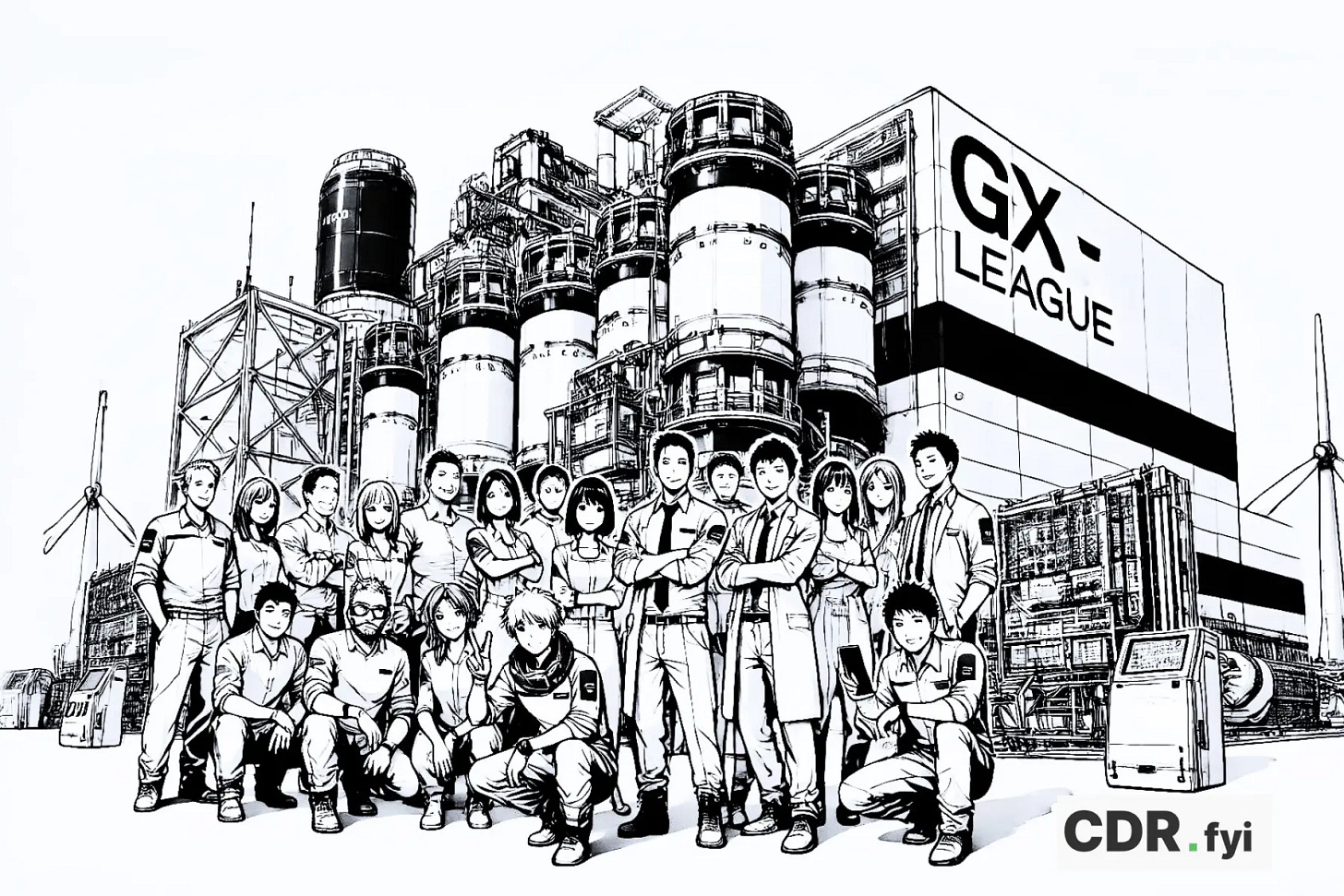Surrendering Dominance: A case study with direct air capture
Never yield advantage in energy and climate
This is the first in a three-part series: Harvesting Abundance
It builds on ideas in my brain for many years, recently articulated by many, notably Ezra Klein and Derek Thompson in their recent book.
—-
The history of American energy innovation features lost opportunities.
Many times, we have invested substantially as a nation in novel energy technologies only to abandon leadership, giving other nations the chance to build on our foundations. We developed wind turbines and control systems only to cede these to Northern European companies like Vestas and Ørsted. Solar photovoltaics were invented at Bell Labs and pioneered during the Carter Administration at National Renewable Energy Lab and scaled commercially with NASA and Dept. of Defense. Now, China is the undisputed leader, as they are with electric vehicles and lithium ion batteries. Even with nuclear power, developed by the US for submarines and aircraft carriers, dominance has shifted to Korea, China, and France.
The US is about to repeat these mistakes again with a critical path climate technology.
The second Trump administration has set a course, self-described as “energy dominance”. The framework is based first and foremost in natural resources, mostly fossil energy supplies of oil, gas, and coal.
Describing energy dominance based on natural resources a categorical error in strategy. To paraphrase Wallace Pratt the oil titan George Mitchell, big energy is found in the minds of people.
This includes the shale gas revolution brought forward by horizontal drilling and fracking, which unlocked immense oil and gas supplies. This was made possible by Mr. Mitchell’s imagination and business acumen. and sustained Federal support to vet and develop the technologies.
Similarly, a strategic push for American energy dominance should anchor in innovation, not natural resources. In the 21st century, wealth is created by innovation in finance, business, technology, and energy. New energy technologies deliver prosperity and will deliver the future we desire.
That includes a sustainable climate.
That includes CO2 removal and Direct Air Capture.
—
“Assuredly we can afford this and so much more. Anything we can actually do, we can afford. … We are immeasurably richer than our predecessors.” – John Maynard Keynes
The Intergovernmental Panel on Climate Change (IPCC) dropped a bombshell report in 2018. It included the recognition that the world could not reach a 1.5C stabilization goal without large amounts of CO2 removal – between 100 billion and a trillion tonnes by 2100. Since then the CO2 removal required has grown, as we failed to reduce GHG emissions quickly and blew past 1.5. Current estimates are between 5-12 billion metric tonnes per year.
This would make CO2 removal the largest market of human history.
There are lots of ways to remove CO2 from the air and oceans (for example, trees). But direct air capture, or DAC, plays a linchpin role. It’s the backstop technology when other climate and energy approaches simply cannot physically or economically deliver. For the record, the National Academies of Science and Engineering agrees. They concluded that DAC would provide 50-75% of all CO2 removal.
Pursuing DAC and other climate and energy tech equals harvesting abundance. It would harness abundant energy resources in the US and our best innovators and workforce at a critical moment. Many groups have described this as a trillion dollar market, including McKinsey and BCG. Their arithmetic is simple: billions of tons removal each year at hundreds of dollars a tonne equals trillions. Using the IPCC’s and the National Academies’ numbers, 5 gigatonnes/year reaches a trillion dollar market at $200/ton – a good target price for DAC.
I know something about this: during my service in the Obama Administration, I signed the first ever grants for DAC research. It was money well spent: one $750k grant led to a $68M investment in a company, which has grown in value to more than $1.1 billion and is about to commission the first megaton-scale DAC project in history.
Policies and investments of the past have prepared us for this moment of investment and growth. In addition to growing annual appropriations for use-inspired and applied research for DAC, the Bipartisan Infrastructure Law set aside $3.5 billion for Direct Air Capture Hubs. granted by the Department of Energy through open and fair competition and significantly contracted, including two large projects and 21 smaller projects to foster, develop and test new technologies and companies.
The Inflation Reduction Act also expanded the 45Q tax credit to provide additional funds for Direct Air Capture, reducing the cost and risk for early investors and buyers.
Alas, the Administration, to be charitable, is not seizing this opportunity. Here’s what the administration is doing:
DOGE cuts to Hubs: Many articles (e.g, here and here) reveal plans to end the commitments to the Direct Air Capture Hubs.
Repeal of tax credits: The Administration has called to repeal 45Q tax credits that would support DAC projects and operations, over the objection of many Congressional Republicans.
Reductions in investment in pilots: Beyond the DAC Hubs cuts, DOGE proposes eliminating the funds to bring technologies from the bench into pre-commercial testing. This step (the second “Valley of Death”) is essential for any advanced technology, and extremely difficult to finance. Such cuts and recissions are mirrored in the Administration first budget.
Rescission of research: Finally, the budgets proposed would significantly slash use-inspired and applied research budgets. Although many Congressional republicans support basic and early applied R&D, the White House budget does not.
Such cuts would cripple innovators and entrepreneurs in carbon management of all kinds, including those the President says he supports. University researchers, start-up companies, and state development authorities would suffer.
More profoundly, these cuts will destroy US companies. It will truncate US workforce for a generation. It will chill investment in projects and companies, in red and blue states, leading to capital flight from the US. The loss would take a generation to repair. Other nations would surely take the opportunity to roar ahead in developing and commercializing these technologies and support their domestic companies.
Who would benefit? China for one. I have seen China’s innovation engine up close; this would repeat past errors where the US needlessly abandoned ground. China’s companies make sustained investments backed by government funds. Regarding DAC, firms and innovation centers stand at the starting like, ready to run – much like with batteries and solar 20 years ago.
Japan would pull forward as well, given their long-lived R&D agenda and extraordinary recent commitments to a low carbon economic drive that explicitly includes both DAC and carbon management.
Image courtesy of CDR.fyi
Canada has a comprehensive national CO2 removal strategy and hosts many of the most innovative and successful CO2 removal companies, including arguably the market leader in DAC. Norway, the Gulf states - even Kenya – stand ready to pick up the slack where America stands down.
While some US companies may step in with capital and commitments, it won’t be pretty. Much capital would be pointlessly wasted on promises and contracts, leading to low valuation and bankruptcies. Communities with projects would feel burned. A few innovative companies would likely survive through
corporate investment, but the ecosystem would be permanently damaged. Trust in US enterprises would be diminished in a global market.
This article focuses on DAC, but it could just as easily be about solar perovskite cells, high altitude wind, long-duration storage batteries, green hydrogen, synthetic fuels, advanced biofuels, or low-carbon steel, fertilizer, or concrete. These all represent large, emerging global markets where the US would abandon its hard won, early lead and surrender our advantage in innovation and scale.
I sincerely hope that the Administration abandons this reckless pathway.
I sincerely hope it does so in part to maintain its innovation and commercial lead.
I sincerely hop Congress prevents these destructive and pointless outcomes.
Sustaining Congress’s goals and the DOE’s investment and commitments could foster a new kind of energy dominance: abundant sustainable cheap energy, in service to clean up our mess and make good advantage of all our energy resources.
Abandoning these advantages?
That’s not dominance. That’s surrender.



I'm encouraged by promising new direct-air capture innovations like these.
https://interestingengineering.com/innovation/uh-carbon-capture-membraneless-system?utm_campaign=13508169-The%20Blueprint%20Daily%20Subscription&utm_medium=email&_hsenc=p2ANqtz-8_Ju5puukf6K6t3E0TUAhiG3ls4wJnZydbuMALTfaT4xVn0RMvZJ9LYPS7HumF2mUCXiefbN5Aa0_HXt8nxEvmJche-Q&_hsmi=377215748&utm_content=377215748&utm_source=hs_email
Your essay offers a valuable perspective on CO2 removal from the top of the value chain, but it overlooks critical challenges at the operational level, leading to incomplete conclusions.
As an innovator at the bottom of the value chain, I tackle the chemistry and physics of carbon capture directly, manipulating molecules and measuring energy in joules. Every decision balances useful work against entropy. For the past three years, novel CO2 capture pathways have lacked support in the U.S., stifling innovation. Climate venture capitalists offer little support, as they predominantly back technologies tied to U.S. DOE initiatives, overlooking innovative, thermodynamics-driven solutions outside this framework.
CO2 removal at the scale required would be the largest market in history, demanding unprecedented energy. Thermodynamic constraints make current capture technologies inefficient, as they destroy carbon exergy, rendering them unusable at scale.
The Biden administration’s Carbon Removal Moonshot failed by neglecting innovation and thermodynamic principles. Spending without technical grounding doesn’t guarantee success. Trump’s cancellation of these programs is defensible on technical merits.
You correctly note that U.S. energy innovation is being ceded to other nations. Abandoning exergy-destroying CO2 capture technologies could be beneficial if paired with robust support for next-generation methods that preserve and refine carbon exergy. Energy-efficient, cost-effective solutions are feasible now, but U.S. policy has sidelined innovation for the past three years.
Innovators like me are forced to seek funding elsewhere. I’m preparing two funding applications for Tencent—one for flue gas capture, another for direct air capture. If China values energy efficiency and thermodynamics, they could own my technology. Then, with aggressive development, they can dominate CO2 removal for decades. This raises concerns: if China controls 80% of the CO2 removal market, will U.S. policymakers be willing to funnel billions of taxpayer dollars to them?
I urge those interested in large-scale carbon removal to study the thermodynamics of capture. My essays aim to clarify these issues, and I invite further discussion to drive meaningful progress.
Mike
https://circularcarboninnovations.substack.com/p/ai-and-universal-co2-capture